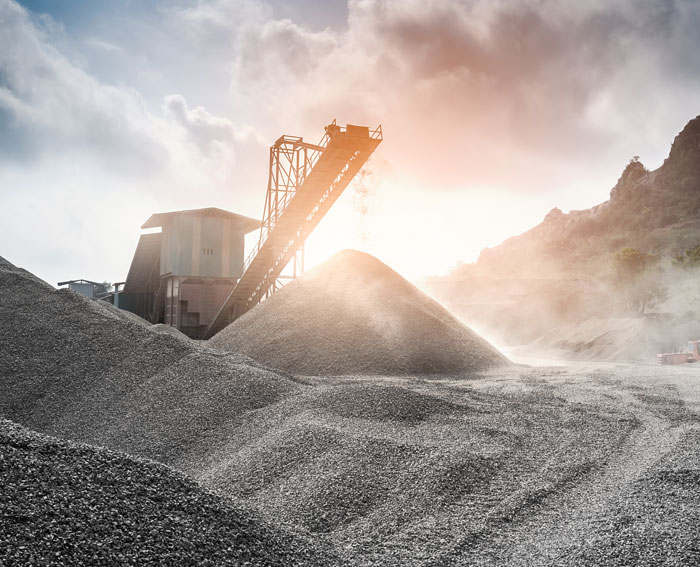
When it comes to the procurement of raw materials, we collect the necessary raw materials from various industrial and engineering units and overseas. The abundantly available MS remnants from industrial lathes and product manufacturing units are procured, sifted and separated according to their nature, quality and chemical compositions and tested before melting. We use our in-house lab to check if the Fe content is at the optimum level. Sponge Iron is added based on requirement in the form of Lumps, Fines and Pellets to offset inadequacies.
The raw material containing various grades of Mild Steel shrapnel & Sponge Iron is inspected and segregated according to their quality.
The first step in the treatment of raw materials is to melt them in the crucible. Then, the impurities are removed from the molted metal or liquid metal by tapping it out. To ensure the right chemical composition of liquid metal, samples of the molten metal are taken to the lab for testing in spectrometer. Necessary quantities of certain required elements are added as value additions until the perfect fit is achieved. This is crucial step in the manufacturing process as it determines the quality of the final outcome, that is, the finished goods. The molten metals casting as hot square billets through continuous casting machine. The waterflow and water pressure has been recorded and controlled for getting high temperature billets.
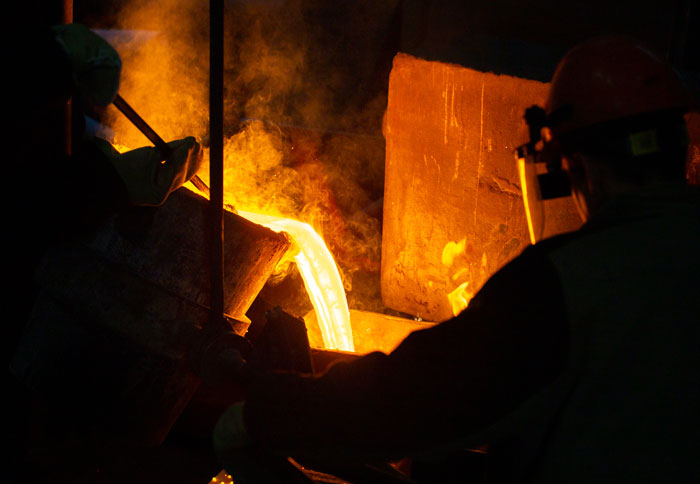
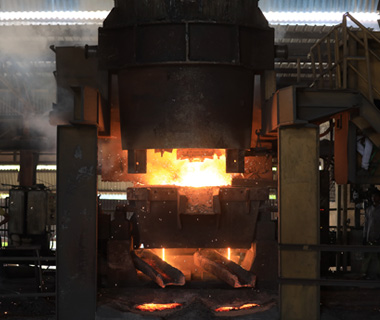
The liquid metal is then transferred to the Ladle for refining it. The process of refining let Sulphur and Phosphorous particles contained in the molten material to float and the gases to get released. The resultant liquid material is added ferro-alloys and sent to the caster.
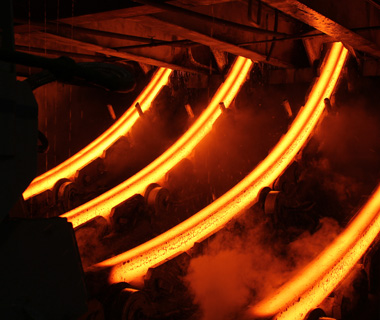
The liquid metal which is now transferred to the Tundish is then sent to the Copper Mould Assembly where it is cast into Square Billets.
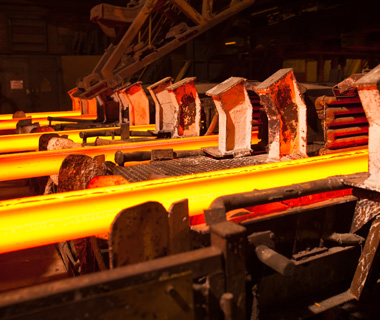
The Billets that come out of the continuous Casting Machine are fed into the Rolling Mill through Roller Conveyers.
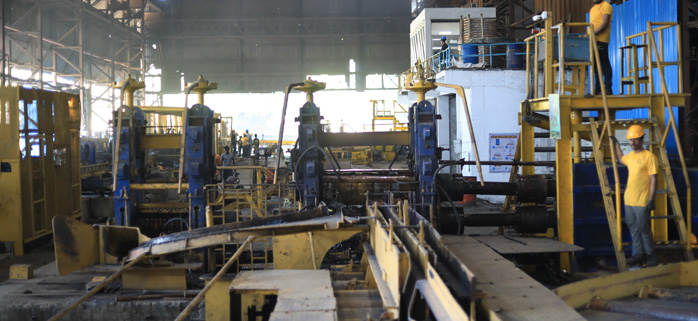
The hot billet materials, feed to our rolling mill through high speed conveyors. The hot material has been rolled on the roughing mill and the full straight continuous mill, which are controlled using the digital drives. The temperature of the material before roughing mill entry has been monitored. The heat of the billets is stabilized at a nominal temperature to get the desired quality for the end products. The continuous mill helps to achieve uniform rib, weight, length and grade throughout the entire bar.
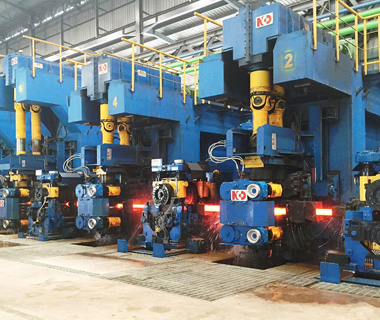
Here, the hot rolled Rebars are passed through the Quenching Box designed using Thermex process. Soft water is used for quenching with its temperature and pressure automatically monitored using PID Gain Controller and Variable Frequency Driven Motor Pumps. As a result of this process, the outer layer of the Billets is cooled rapidly to form Tempered Martensite. The inner core which gets cooled slowly by the natural air lets the heat conducted to the top layer gradually and gives the inner core a Ferrite Pearlite Microstructure that allows elongation of the bars.
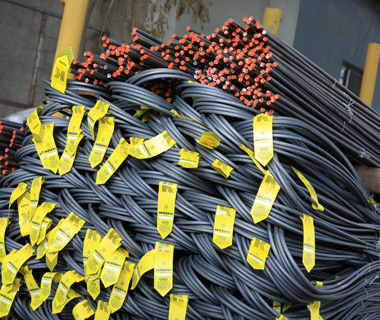
The strengthened bars are now processed through the Continuous Shearing and Plain Shearing Machines for cutting the Rod uniformly at 40 feet exact length. Following which, the thus-far-finished TMT Bars are collected by the inclined Transfer Table and it shifts them over to the Bending Machines where 'U' bending of the rod takes place. Now, the fully finished TMT bars are bundled, tagged and moved to our stockyard which is fully closed and stored above the ground. This prevents damage by environmental exposure and contact with the ground.
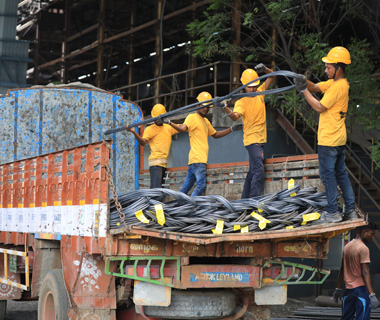
Our Dispatch Division which is equipped with sophisticated handling equipment and two in-house weigh bridges, and well supported by third-party logistics enables quick deliveries.
Let's Build a Strong Foundation for the Nation